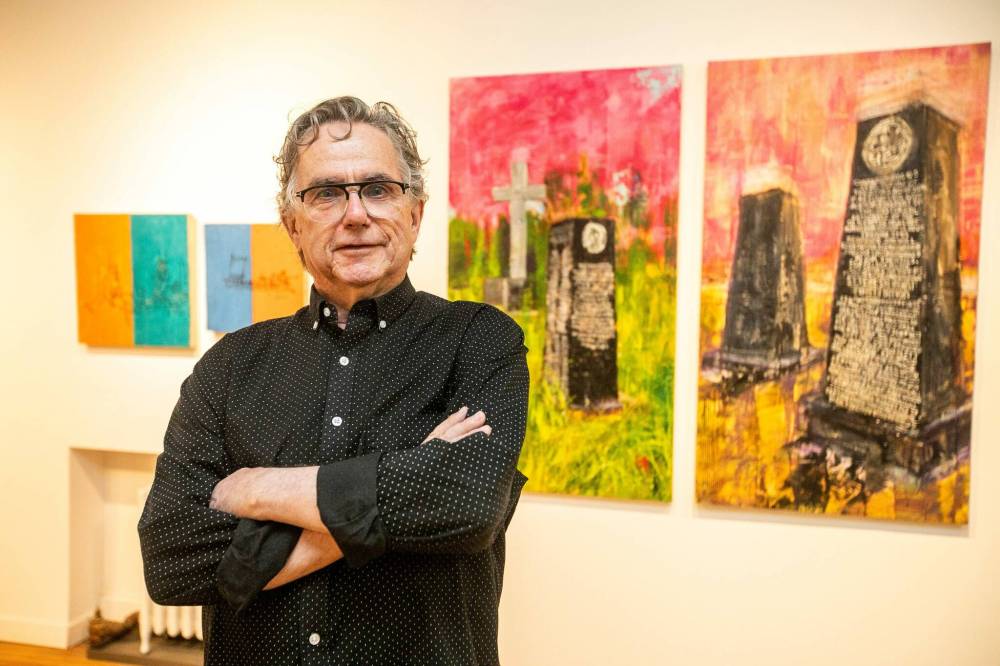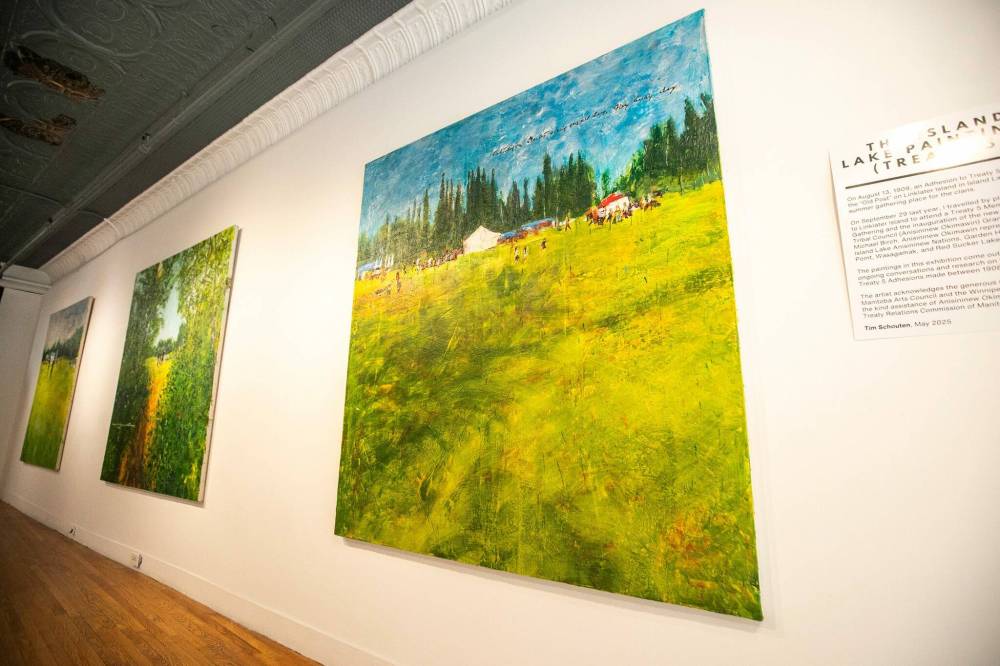Artist uses ancient technique to tell historical stories
Advertisement
Read this article for free:
or
Already have an account? Log in here »
To continue reading, please subscribe:
Monthly Digital Subscription
$1 per week for 24 weeks*
- Enjoy unlimited reading on winnipegfreepress.com
- Read the E-Edition, our digital replica newspaper
- Access News Break, our award-winning app
- Play interactive puzzles
*Billed as $4.00 plus GST every four weeks. After 24 weeks, price increases to the regular rate of $19.00 plus GST every four weeks. Offer available to new and qualified returning subscribers only. Cancel any time.
Monthly Digital Subscription
$4.75/week*
- Enjoy unlimited reading on winnipegfreepress.com
- Read the E-Edition, our digital replica newspaper
- Access News Break, our award-winning app
- Play interactive puzzles
*Billed as $19 plus GST every four weeks. Cancel any time.
To continue reading, please subscribe:
Add Free Press access to your Brandon Sun subscription for only an additional
$1 for the first 4 weeks*
*Your next subscription payment will increase by $1.00 and you will be charged $16.99 plus GST for four weeks. After four weeks, your payment will increase to $23.99 plus GST every four weeks.
Read unlimited articles for free today:
or
Already have an account? Log in here »
Last September, Winnipeg-based visual artist Tim Schouten travelled to Linklater Island in northern Manitoba.
He was there to attend a Treaty 5 memorial gathering and the inauguration of Michael Birch as the Grand Chief of the Island Lake Tribal Council (Anisininew Okimawin).
He was also there to document the site where an adhesion was made to Treaty 5 in 1909 as part of a long-term art project he’s been working on for decades.

MIKAELA MACKENZIE / FREE PRESS
Artist Tim Shouten adds coloured pigments to hot wax in a process called encaustic painting.
Schouten’s latest exhibition, The Island Lake Paintings (Treaty 5) — on view at Soul Gallery until June 13 — is a series of large-scale encaustic works based on photographs Schouten took while on his trip.
They are the latest entries in The Treaty Suites, Schouten’s ongoing project to research and photograph the exact locations of the signings of each of the 11 numbered treaties between First Nations and the Canadian government between 1871 and 1921, and create suites of paintings related to each one.
Schouten and his wife travelled to Eastern Europe in the 1990s, and he was overwhelmed by the sense of history and landscape there. He was also ready for a transition in his own work.
“I just happened to be reading a Polish edition of Flash Art Magazine with an article about a German painter Anselm Kiefer, who became a huge influence on my work going forward. His work focused on landscape and memory, which is sort of where this work comes out of,” says Schouten, 72.
“I came back to Canada and I had this idea to start thinking about the landscape as a historical document.”
His own scenery had changed at that time as well: Schouten and his wife moved to Winnipeg from Toronto shortly after their trip.
“There were a couple of things I encountered. First of all, the Indigenous presence in the city was quite new to me. Just standing on street corners and people were talking in Cree and Ojibwa — that was something quite new to me,” he says.
“And travelling around the province, I became very conscious of the isolation of a lot of First Nations communities, and also the level of racism that was so obvious everywhere in this city.”
The Treaty Suites began after a visit to Lower Fort Garry, where Treaty 1 was signed in 1871, and expanded from there. Schouten has spent the last 20 years travelling all over the province and painting what he’s seen.
Going to these places —actually being in these places — is the point. His works are not historical renderings; Schouten wanted to paint these sites as they exist today.
“I kind of shifted my thinking to focus on the landscape in my work, but I was conscious of the colonial aspects of landscape painting itself, just in depicting the wild landscapes of colonized territories,” he says.

MIKAELA MACKENZIE / FREE PRESS
The Island Lake Paintings (Treaty 5) depict where Treaty 5 was signed on Linklater Island in northern Manitoba.
Schouten’s preferred medium of encaustic painting — an ancient technique in which coloured pigments are added to hot wax — allows for a different approach to landscape painting as well.
“The way I build these paintings, I build layer upon layer and then scrape back into them. I scrape off and remove and paint back in. And part of my thinking is, as I’ve often said before, is that just over the course of their creation, they sort of develop a history of their own,” he says.
As a settler artist, Schouten is not trying to tell Indigenous people’s stories with The Treaty Suites.
“I think when people encounter this work and learn that it’s a non-Indigenous guy that’s making this work, it’s like, well, why is this guy talking about treaties?” he says.
It’s because we are all treaty people, Schouten says.
“My ancestors signed these treaties, too. We’re all signatories to these treaties. They’re embedded in the federal laws of this country, and so I have a responsibility to that treaty relationship to make sure that it’s true and genuine and honours the intentions of everyone who’s signed. There was an agreement to share the land in good faith, and that’s obviously failed. And I just felt like it was something I wanted to address in my work, just as a matter of conscience.
“I certainly couldn’t just paint beautiful landscapes.”
jen.zoratti@winnipegfreepress.com

Jen Zoratti is a columnist and feature writer working in the Arts & Life department, as well as the author of the weekly newsletter NEXT. A National Newspaper Award finalist for arts and entertainment writing, Jen is a graduate of the Creative Communications program at RRC Polytech and was a music writer before joining the Free Press in 2013. Read more about Jen.
Every piece of reporting Jen produces is reviewed by an editing team before it is posted online or published in print – part of the Free Press‘s tradition, since 1872, of producing reliable independent journalism. Read more about Free Press’s history and mandate, and learn how our newsroom operates.
Our newsroom depends on a growing audience of readers to power our journalism. If you are not a paid reader, please consider becoming a subscriber.
Our newsroom depends on its audience of readers to power our journalism. Thank you for your support.

